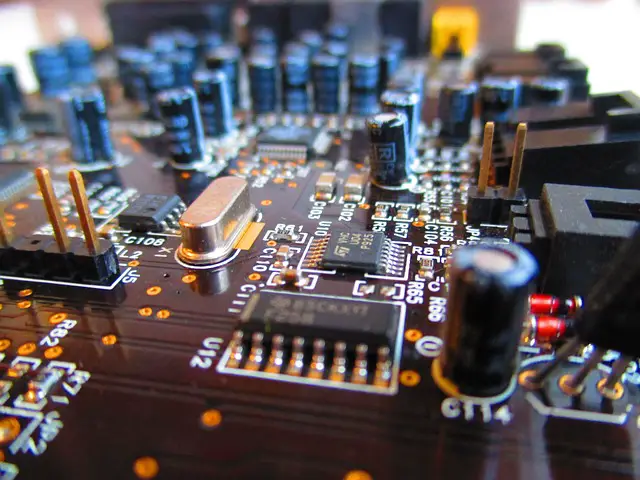DC Circuits

Welcome to Module 3, our introductory guide to DC circuits. Now that we have a good grasp of electrical theory, we’ll build on the concepts introduced in Modules 1 and 2 to introduce you, step by step, to the components and functionality of DC circuits. We’ll be covering the basics of Direct Current circuits including resistors in series and parallel, and capacitors. Along the way we’ll deepen our knowledge about important topics like voltage, current, and resistance. Finally, we’ll be using this knowledge to develop a comprehensive understanding of more complex circuits including voltage dividers and RC circuits.
DC Circuits are incredibly important. Most electronics use DC circuits including the computer, tablet, or phone that you are probably reading this website on. It’s also the best way to start learning about electrical theory. You’ll quickly learn almost all of the important concepts. You can explore many of the important electronic devices (such as resistors, capacitors, LEDs and lasers). Some of these will be covered in the modules on DC circuits, and others will be discussed in our modules on semiconductors.
Once you have a solid understanding of DC circuits, you can skip the section on AC circuits if you’d like. However, it is helpful to understand some AC devices like transformers so we’d recommend at least skimming that material.
On with the show! Let’s learn about Direct Current Circuits in Lesson 1: Introduction to DC Circuits.
Module 3 – DC Circuits
Lesson 0: Introduction to Module 3
Lesson 1: Introduction to DC Circuits
Lesson 2: Series and Parallel Circuits
Lesson 3: DC Power Sources and Batteries
Lesson 4: Resistors, Capacitors, and Inductors
Lesson 5: Resistors in Series
Lesson 6: Resistors in Parallel
Lesson 7: Voltage Dividers
Lesson 8: Kirchoff’s Current Law (KCL)
Lesson 9: Kirchoff’s Voltage Law (KVL)
Lesson 10: Capacitors
Lesson 11: Dielectric Materials
Lesson 12: Capacitors in Parallel
Lesson 13: Capacitors in Series
Lesson 14: Capacitors in Series and Parallel
About This Course
On each page, you will find a drop-down lesson menu at the top of the page and a content listing at the bottom of each page for easy access if you’d like to review past lessons or jump around.
Below the drop-down menu, you will find a ‘Why it’s important‘ section to help clarify why we are covering that topic, and why we put it in that order.
Following the ‘Why it’s important’ section, you will find the main lesson, a link to the next lesson, and a Module content listing below that.
If you’re a newbie, we recommend reading through each lesson before moving on to the next. As in any complex subject, the more you learn, the more you will understand- don’t be surprised if you find it difficult at first- because the farther you go, the more you will be able to understand. Each new concept builds on the last, but also enhances your understanding of what you thought you already knew.
As always, if you have any questions, don’t hesitate to reach out!